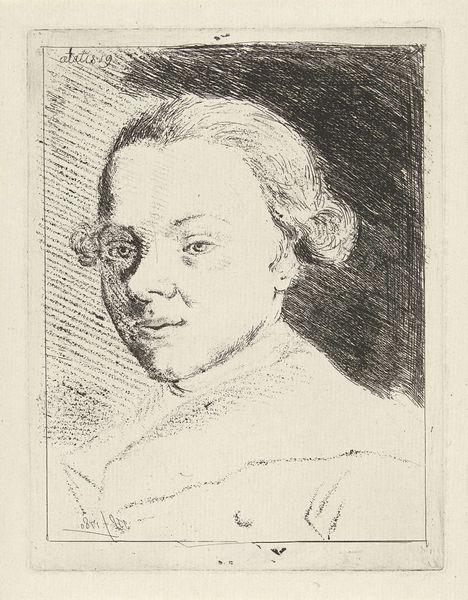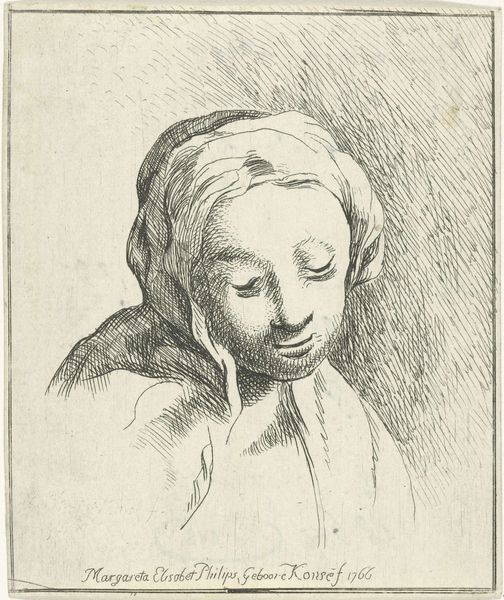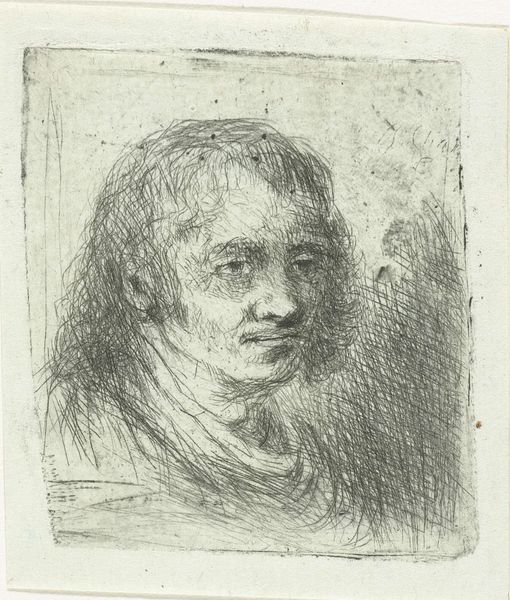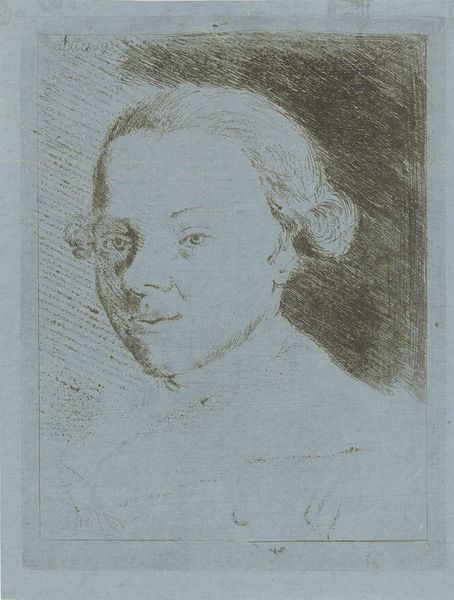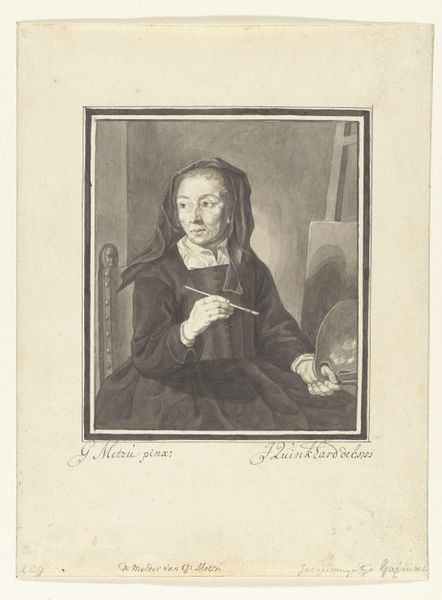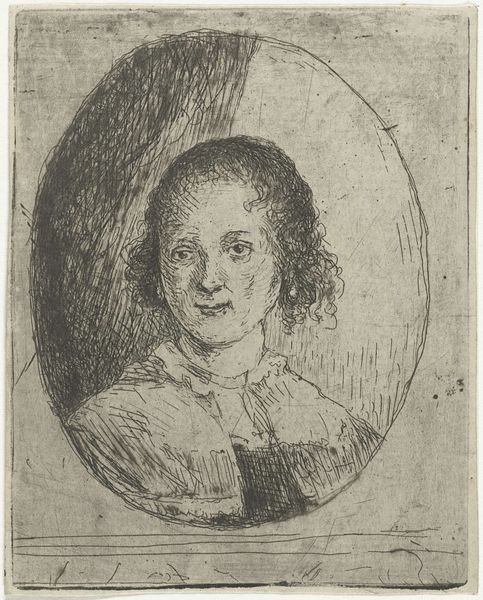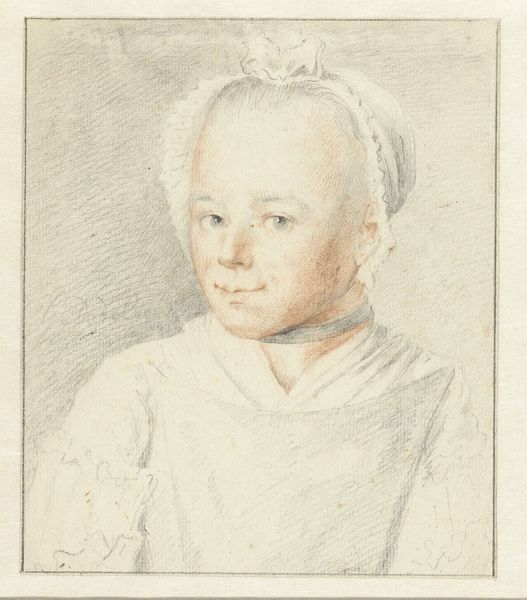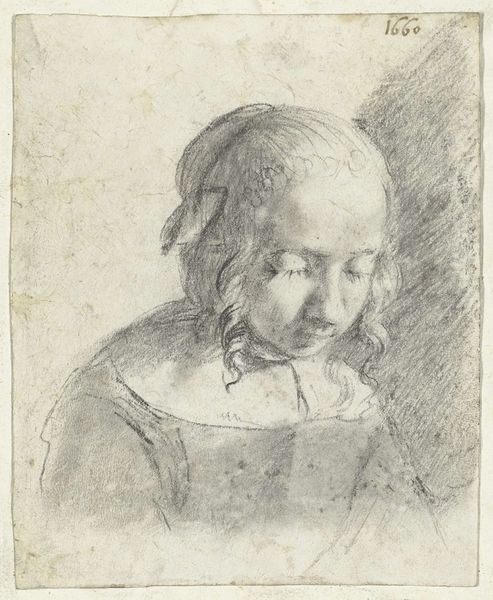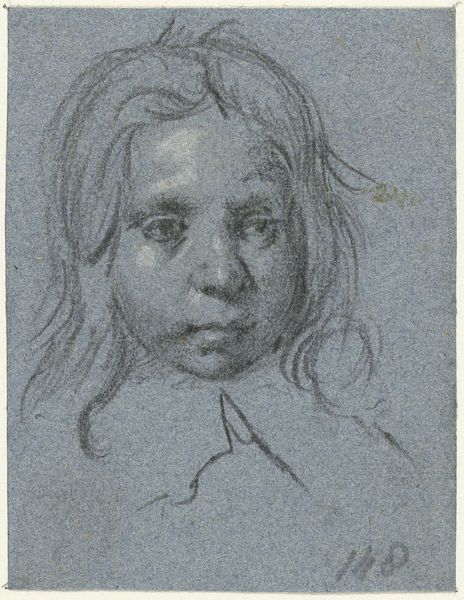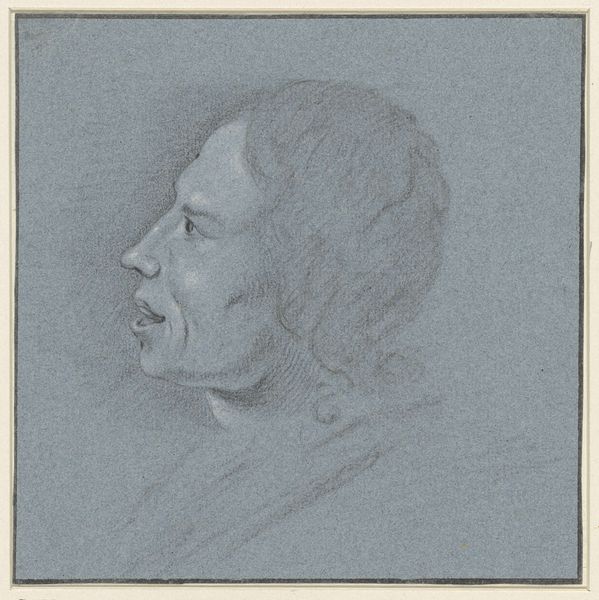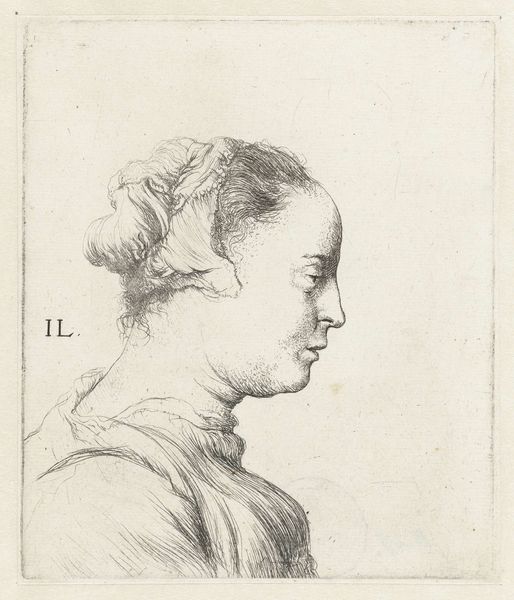
drawing, pencil
#
portrait
#
drawing
#
dutch-golden-age
#
pencil sketch
#
pencil
#
genre-painting
#
realism
Dimensions: height 90 mm, width 73 mm
Copyright: Rijks Museum: Open Domain
Moses ter Borch created this study of a woman's head with pen in the Netherlands, sometime in the mid-17th century. Notice the woman’s gaze. It’s directed slightly downward, conveying a sense of pensiveness. This motif of the downcast gaze appears across cultures and eras, from ancient Roman sculptures to Renaissance portraits. Often, it is used to indicate modesty, contemplation, or even sorrow. Think of Mary, the mother of Christ, frequently depicted in a similar pose to express her grief. Yet, the interpretation evolves. In the Renaissance, the downcast eyes might suggest humility before God, but in a 19th-century novel, it could hint at a hidden inner life or repressed desire. This gesture, laden with psychological depth, engages us on a subconscious level, stirring empathy and curiosity. Ultimately, this small study captures how gestures and expressions carry cultural memory, resurfacing and transforming across time.
Comments
No comments
Be the first to comment and join the conversation on the ultimate creative platform.
